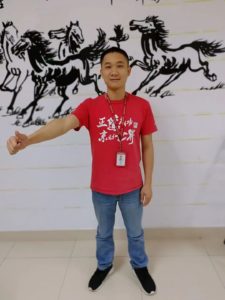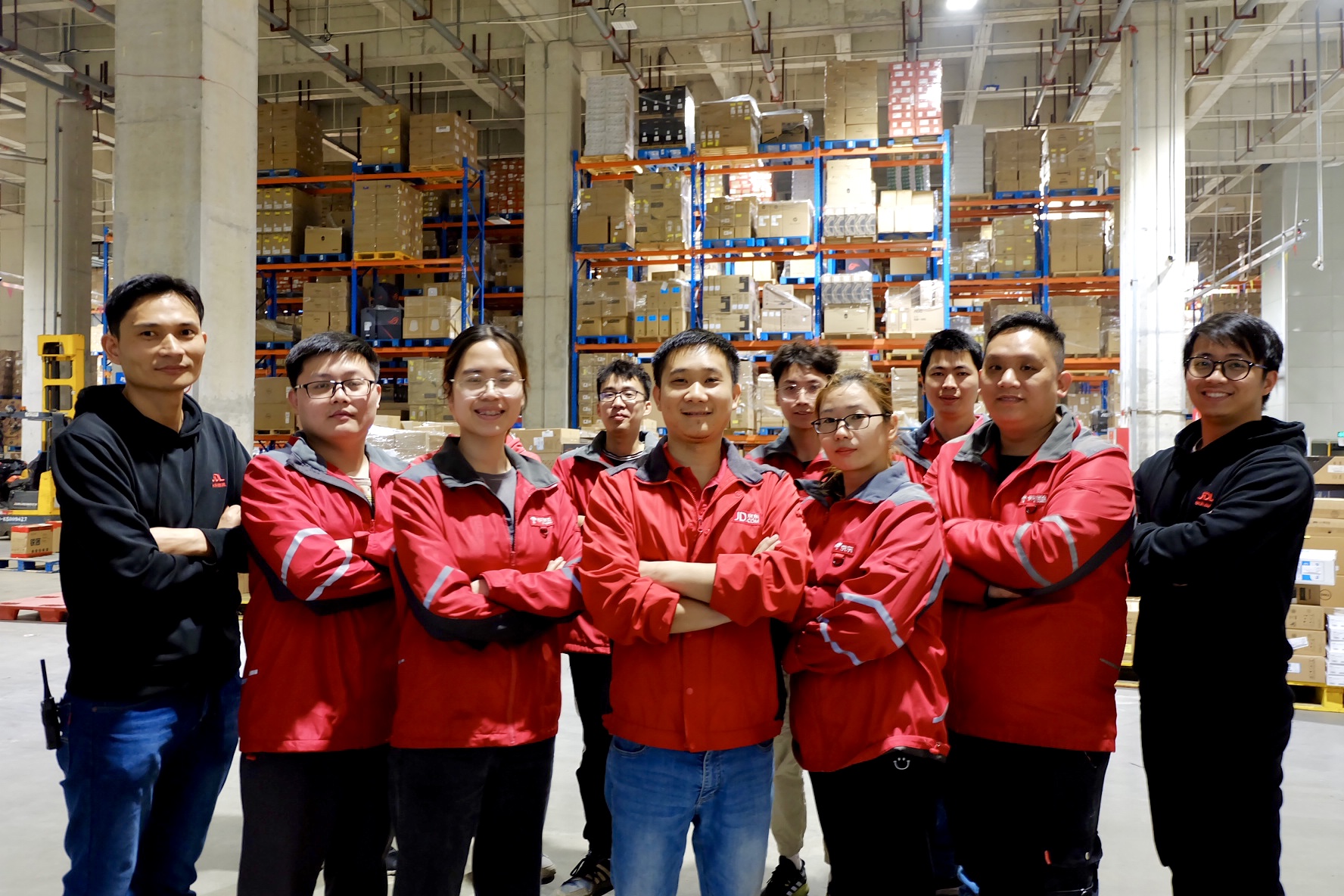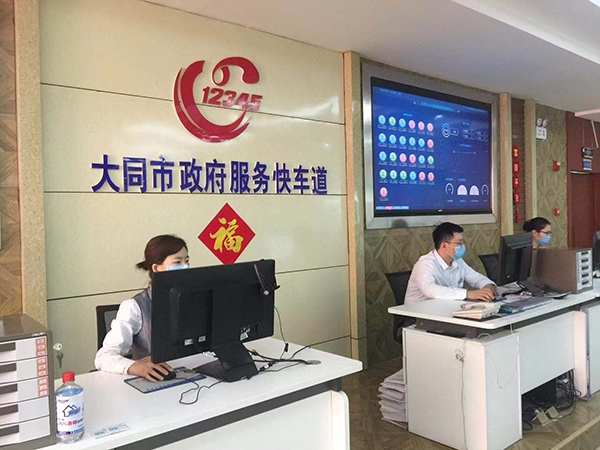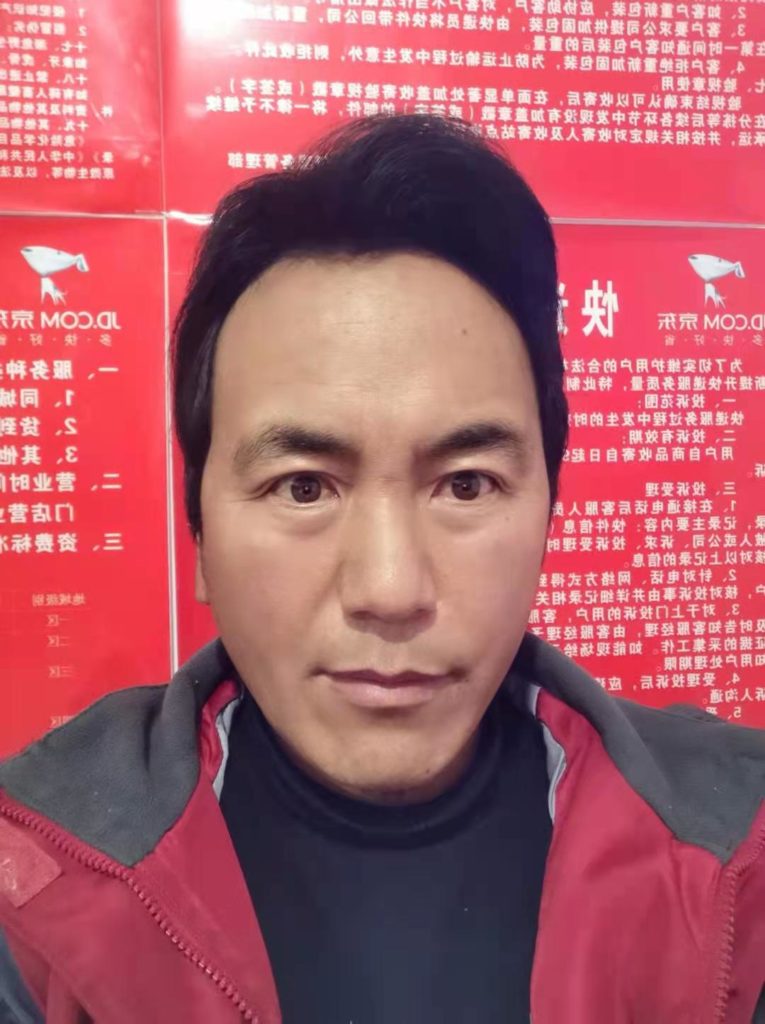by Ella Kidron
When Qinran Liang (梁勤然) joined JD Logistics 13 years ago, he was brand new to the industry. Since then, he’s grown a lot—and so has the company, which at the time was a traditional logistics player in service of JD’s retail business. “The company has transformed, step by step, day by day,” he said.
Today, JD Logistics, operates a network of over 900 warehouses, according to JD.com’s latest earnings report released on Mar. 11. Five thousand robots have been deployed in 100 of the company’s warehouses. With this level of automation, 90% of first party retail orders are able to be delivered same- or next-day to consumers all across China. Liang has been there, every step of the way.

Liang in his early days at JD
From Guangzhou to Dongguan, Traditional to High Tech
Liang, who is affectionately called “Brother Liang” (“Liang Ge”) by his colleagues, hails from Sulong village, Luoding city, in the southern province of Guangdong. He recalls, “When I first arrived, we handled all sorts of different tasks, from inbounding, shelving, picking and scanning to packing.” He was one of just a few colleagues in JD’s warehouse in Guangzhou, and was working with a relatively rudimentary system.
A “glass half full” kind of person, Liang recalls that even though it was tiring, the experience helped him get to know the ins and outs of working in a warehouse – something that has proven useful as he now finds himself managing the stereoscopic storage area (自动立库) at JD’s highly automated and intelligent Asia No. 1 logistic park in Dongguan, Guangdong province , and a team of several hundred people. Fully operational since December 2019, the warehouse is one of JD’s 28 Asia No. 1 projects.

Liang introduces Dongguan Asia No. 1
The construction area of 500,000 square meters is twice the size of the Olympic stadium (“Bird’s Nest”) in Beijing. The height when combining all of the 78 automatic stackers is over 1,600 meters, and is equivalent to two Burj Khalifa Towers (the world’s tallest building in Dubai). It can handle 2 million orders per day.
JD University – Unlimited growth opportunity
Having grown up with the company, Liang has celebrated a number of key milestones at JD. Barely 21 years old when he joined the company in 2008, Liang is now married, a father of three kids, a proud homeowner, and a college graduate, thanks to JD University and his own determination to get the job done. JD partners with several renowned universities in China in order to provide employees the opportunity to study while on the job, receiving a bachelor’s degree, or even a master’s degree. Liang explains, “This is not just a JD degree. It has recognition outside of the company” as any other bachelor’s from a reputable university would.” His diploma is from Renmin University of China, one of the best universities in China.
Liang’s primary motivation for studying is to keep up with the pace of change and contribute more to the company. “JD is developing so fast. You need to continue to challenge yourself and grow with the company. There are many opportunities to study; all you have to do is raise your hand.” His perseverance as a student as well as a manager has inspired those around him to also take the plunge. “Many others on my team have also gone on to study. JD provides this platform for development, and you can use it to continue to create more value for the company.” It is this hunger to create value which drove him to study early on, well before he officially went on to pursue his degree.

Liang and some members of his team at JD’s Dongguan Asia No. 1
Early exposure to and fascination with tech
Liang can’t contain his excitement when he talks about how much things have changed since he first joined JD. He recalls as if it were yesterday the first time that he visited and was blown away by JD’s fully-automated warehouse in Shanghai. He was among the third batch in a program where employees spend time learning about how JD’s technology works.
“When you haven’t been exposed to this type of tech before, you think it will be complicated. You have to learn how to operate it.” Luckily there were “old masters,” to use Liang’s words, to show him the ropes. He was able to learn from tech experts in Shanghai. “No matter how many years you are at a company, you have to adopt the mentality that you’re an empty vessel and never stop learning.” No longer foreign vocabulary, JD’s suite of automated tech, including the stereoscopic warehouse, AGV (automated ground vehicle) and more, effortlessly rolls off Liang’s tongue like a to-do list.
“You need to set goals for yourself every one or two years and go study something. It’s important to be exposed to what’s happening outside. This is how you can create more value for the company.” He has gained a highly competitive skillset – there is a shortage of logistics talent in China. But he hasn’t questioned his decision to stay with JD. In fact, he plans to start pursuing his masters this year, and will focus on automation, logistics management and more. “Systems are constantly iterating. You need to research and understand them. It’s more than simple operations; you have to think about how to innovate.”
Living the JD Values
This attitude has not only influenced Liang’s direct reports, but also serves as an inspiration for his family. “Children have a strong ability to imitate,” Liang explains. His hunger to learn has rubbed off on his kids, especially his eldest son who is in fourth grade. “He looks at me and sees, ‘Hey, dad is still studying; he’s getting his bachelor’s. I’d better study too, just like dad.’”
In his downtime, Liang enjoys running and hiking with friends or family. He wakes up around 6 a.m. each morning in order to go for a run before starting the day. “We need to take care of our bodies in order to do good work.” His enthusiasm is palpable, and one can hear his smile in his voice as he speaks.
Liang, who has witnessed JD’s transformation, recognizes how the company has transformed his life and the lives of so many others. It is no coincidence that his two older brothers, one of whom started at JD just before he did, and another who started after, are all long-serving JD employees in different managerial roles, having put in a cumulative 40 years of service between them.
There are many other such stories of employees from rural areas of China who had their first exposure to tech with JD, and have since developed their careers in this direction. Dongguan Asia No. 1 is home to nearly 5,000 employees, of which more than 12% are locals. Among JD’s frontline employees across China, over 200 are from rural areas, and 80,000 have been able to work in their hometowns.
These JDers are not simply repeating some slogan they have memorized by heart. They embody a value that has been internalized since the beginning – to go above and beyond, to do the right things, the right way. In a letter to employees in 2018, JD CEO Richard Liu emphasized that JD’s inherent principle is not about just following the rules, but also setting high demands for oneself, setting high standards for self-improvement and being a model for the industry. It is the JD promise the company has made to customers, employees and shareholders since its very first day as a small kiosk in Zhongguancun. And it is also what keeps them going.
Liang sums it up best: “You create more value for the company, and influence others around you to follow suit.” This is what it means to be a JDer and live the JD principles.
(ella@jd.com)


















